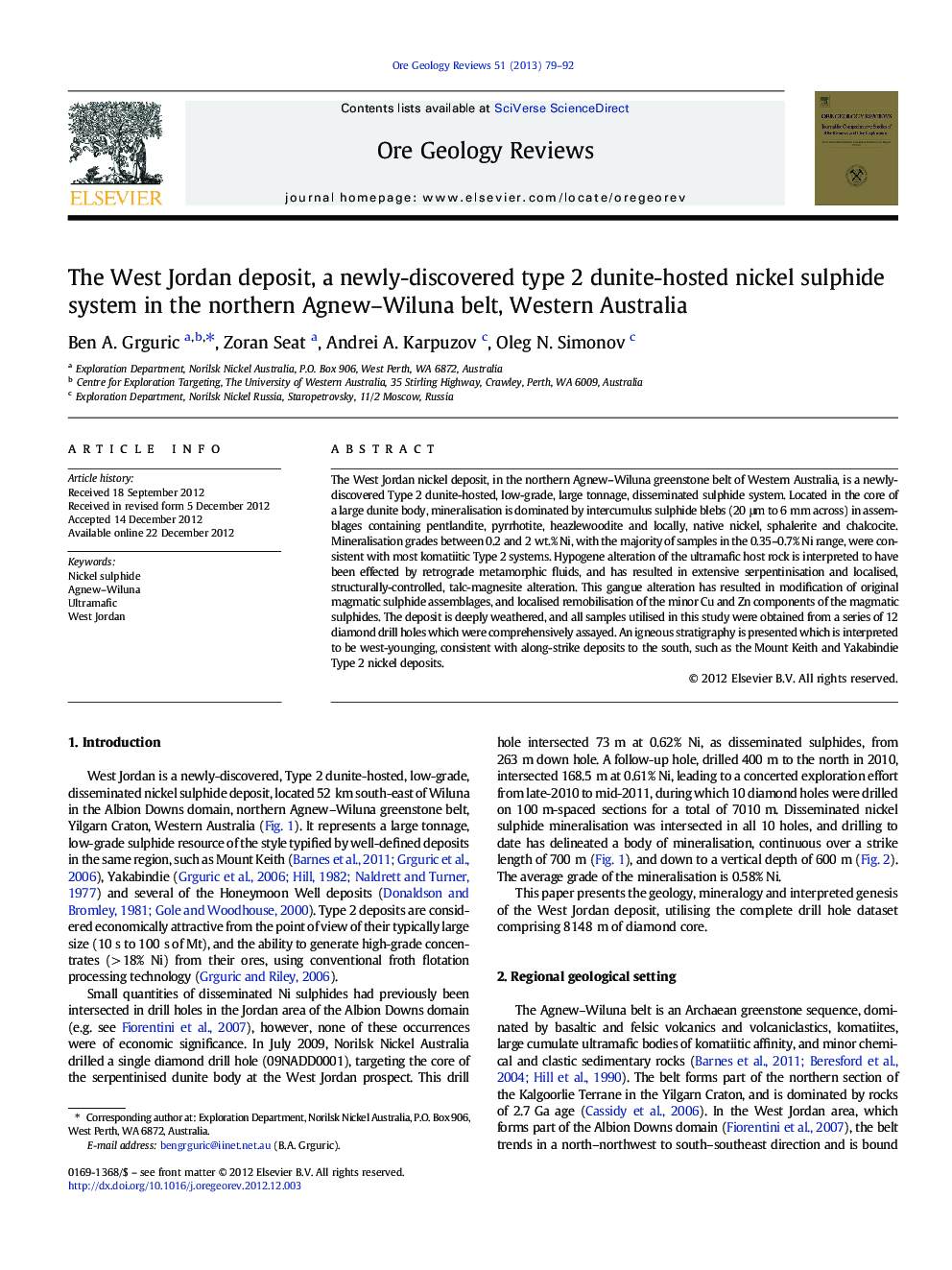| Article ID | Journal | Published Year | Pages | File Type |
|---|---|---|---|---|
| 4697573 | Ore Geology Reviews | 2013 | 14 Pages |
The West Jordan nickel deposit, in the northern Agnew–Wiluna greenstone belt of Western Australia, is a newly-discovered Type 2 dunite-hosted, low-grade, large tonnage, disseminated sulphide system. Located in the core of a large dunite body, mineralisation is dominated by intercumulus sulphide blebs (20 μm to 6 mm across) in assemblages containing pentlandite, pyrrhotite, heazlewoodite and locally, native nickel, sphalerite and chalcocite. Mineralisation grades between 0.2 and 2 wt.% Ni, with the majority of samples in the 0.35–0.7% Ni range, were consistent with most komatiitic Type 2 systems. Hypogene alteration of the ultramafic host rock is interpreted to have been effected by retrograde metamorphic fluids, and has resulted in extensive serpentinisation and localised, structurally-controlled, talc-magnesite alteration. This gangue alteration has resulted in modification of original magmatic sulphide assemblages, and localised remobilisation of the minor Cu and Zn components of the magmatic sulphides. The deposit is deeply weathered, and all samples utilised in this study were obtained from a series of 12 diamond drill holes which were comprehensively assayed. An igneous stratigraphy is presented which is interpreted to be west-younging, consistent with along-strike deposits to the south, such as the Mount Keith and Yakabindie Type 2 nickel deposits.
